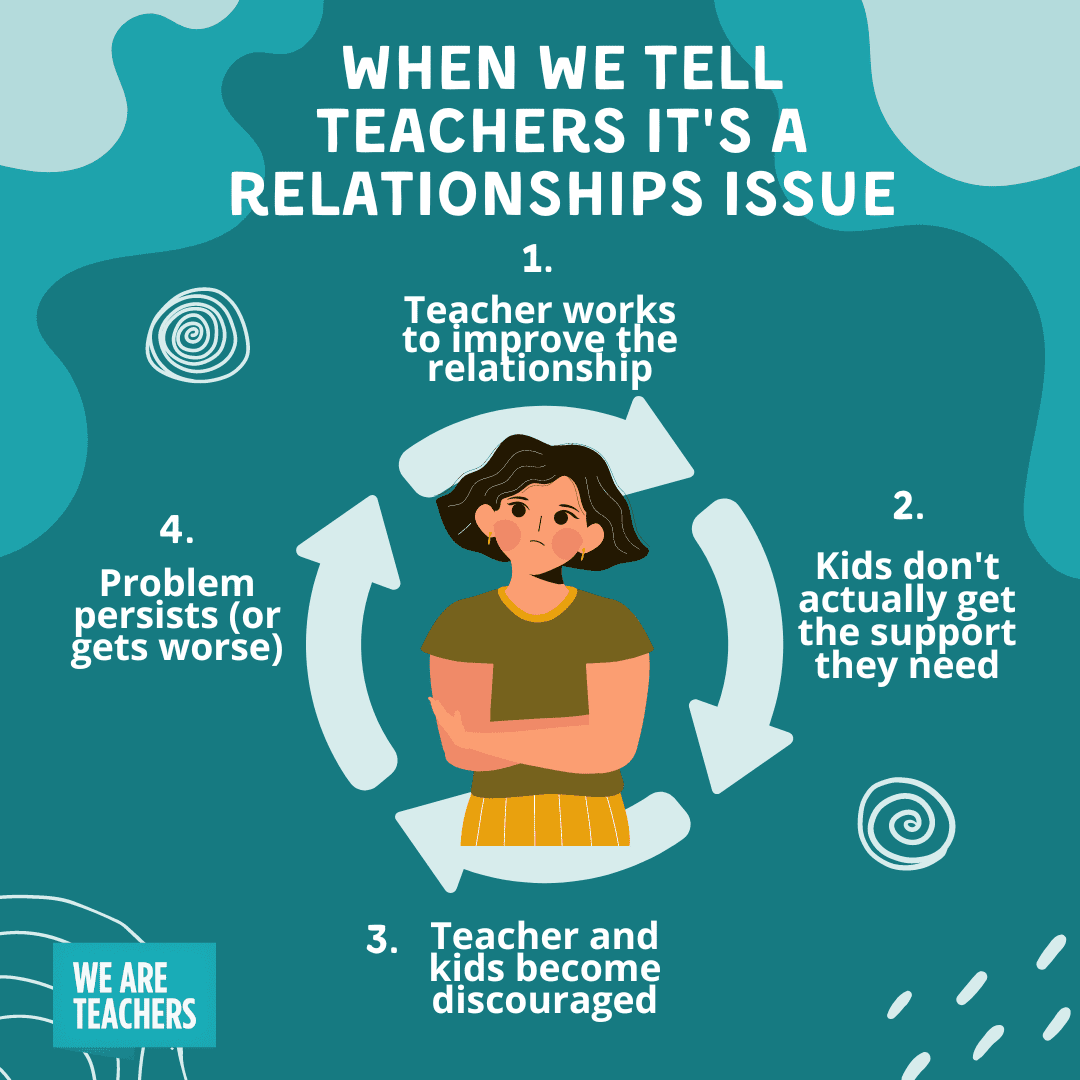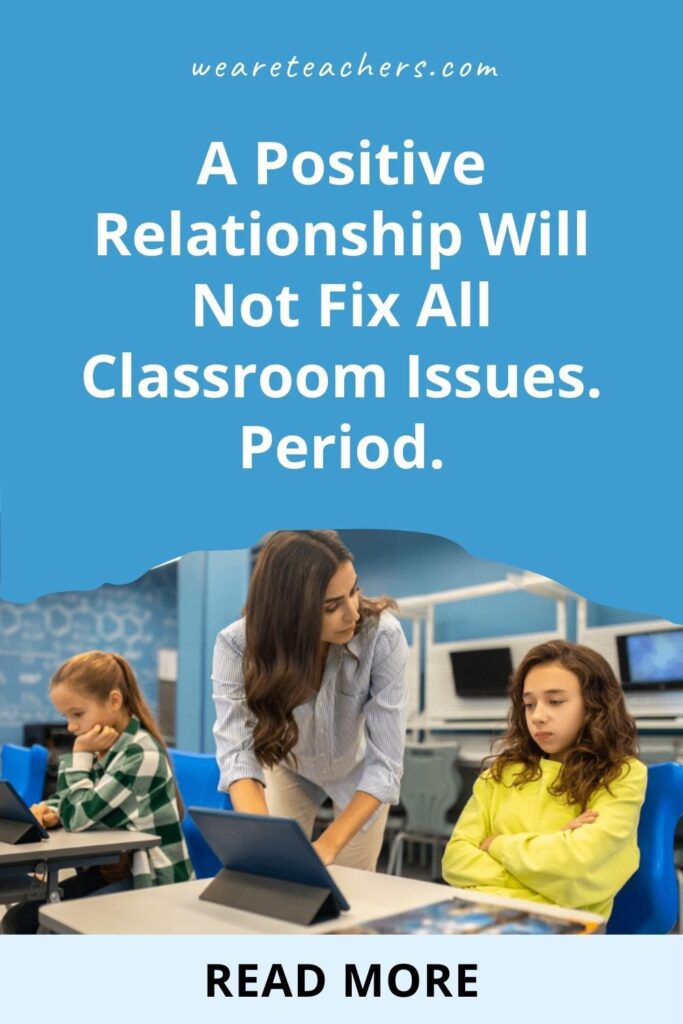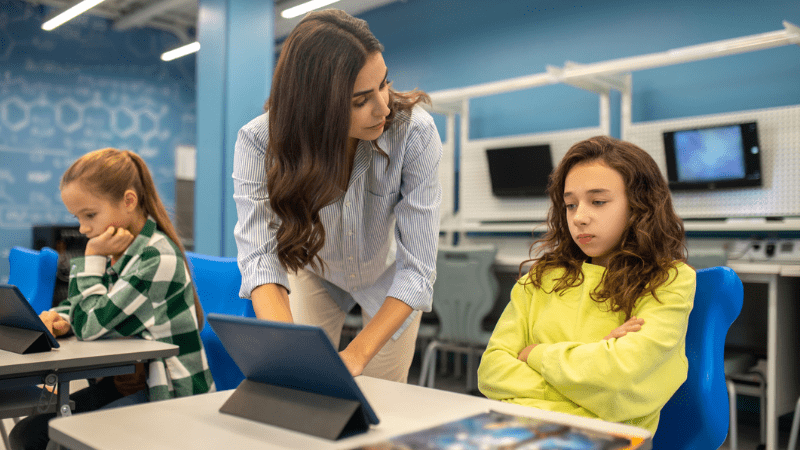For most teachers, the teacher-student bond is the best part of the job. We engage with our kids by investing in their strengths, weaknesses, interests, and aspirations. A lot can be said about this intimate dynamic, especially regarding its influence on the classroom environment and the learning experience. However (and it’s a big however), the increasingly popular notion that a solid teacher-student relationship can solve anything and everything is simply unreasonable … and even damaging.
Within the last few years, parents, administrators, and (especially) armchair quarterbacks have been quick to dismiss legitimate classroom issues by blaming the teacher. A brand-new teacher who can’t control a class (and is not given a mentor or administrative support)? Relationship issue. Student throwing chairs across the room? Just improve the relationship. This notion is glaringly misguided. Certainly there are issues that a strong relationship can help, but there are also issues that it can’t. Let’s break it down.
A positive teacher-student relationship can improve:
- Boosting esteem
- Enhancing engagement
- Increasing cooperation
A positive teacher-student relationship can’t undo the effects of:
- Poverty
- Trauma
- School funding and resources issues
Obviously, there’s a distinction here. To look at these lists and determine that yes, a single person can solve each issue through some bonding, is plainly inaccurate. It’s impossible, yet we expect it of teachers. And therein lies the problem.
A Vicious Cycle
When we routinely dismiss legitimate issues as a flawed teacher-student relationship, everyone loses. We have a vicious cycle in which kids don’t get the support they need, everyone gets discouraged, and the problem persists.

The last thing our education system needs is more unmet needs—for kids or for teachers. We need leaders in education to be better informed and far more realistic about what impacts classrooms in 2022. Part of that means humanizing teachers instead of expecting them to do the impossible.
The reality is that poverty, trauma, and school funding issues are too immense for a single school or teacher to solve. Pointing fingers and casting blame do nothing to help the situation and only fuel this unsustainable cycle. While the teacher-student relationship isn’t the answer to this systemic mess, it is crucial for setting students up for success. We need to be able to work toward the small victories and positive impacts without being expected to solve the world’s injustices. Teachers can do a lot of things. But we can’t do everything.
What other phrases do we need to stop telling teachers? Let us know in the comments!
Looking for more articles like this? Subscribe to our newsletters.

